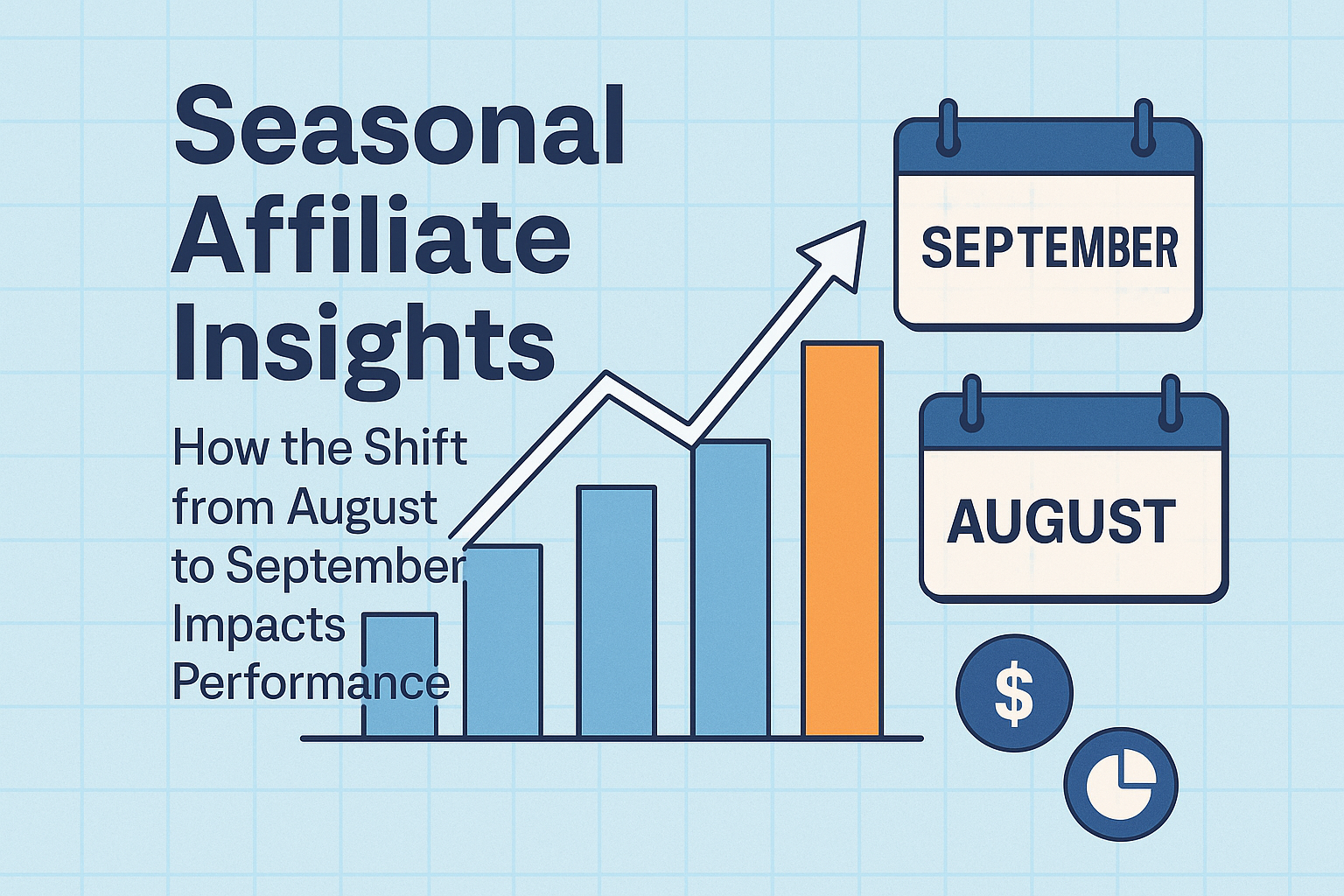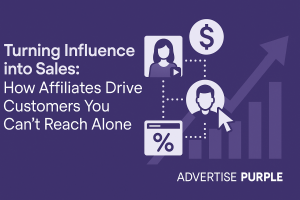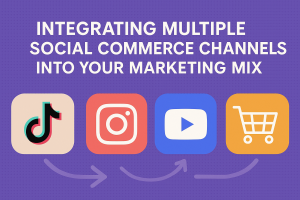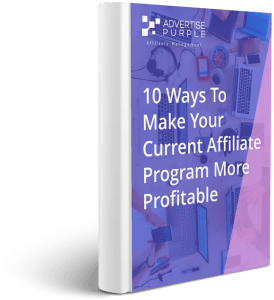
Share
Seasonal Affiliate Insights: How the Shift from August to September Impacts Performance
September is a curious month in ecommerce—not quite the back‑to‑school frenzy of August, but not yet the holiday rush of October. It’s that in‑between stretch where shoppers reset. According to Adobe’s Digital Economy Index, U.S. online spending typically dips by 1–3% from August to September, and the Conference Board recorded a similar drop in consumer confidence during early fall. It all suggests caution—or at least a pause—as households prepare for heavier Q4 spending.
But this is where our proprietary Bloom data steps in. While macro metrics hint at slowdown, Bloom reveals that September isn’t quiet—it’s a pivot.
The Seasonal Context
Think of September as the quiet stretch before Q4’s curtain rise. With back‑to‑school wrapped and summer promotions winding down, brands begin crafting holiday offerings. Though overall ecommerce growth may soften, vertical‑level dynamics tend to reveal more: essentials like health, home, and food often hold steady, while others adjust more dramatically.
Why does this month matter? Because where consumers click, explore, and browse in September often foreshadows what they’ll buy in the holidays. Brands that spot those early signals get to tune their offers in advance.
Bloom Data: Our Proprietary Lens on Vertical Shifts
Bloom, Advertise Purple’s proprietary affiliate performance platform, surfaces affiliate activity in real time across hundreds of verticals. Unlike broad ecommerce benchmarks, Bloom helps brands see which verticals are building momentum—and which are cooling.
Here’s what we observed in the August → September shift:
- Home & Living: Revenue increased 6%, while clicks went up 7%, showing consumers gravitating toward home refreshes as fall routines set in.
- Computer, Electronics & Software: A big lift here, with revenue up 23% and clicks rising 32%—a clear signal that tech tied to school, work, and habit resets is trending.
- Health & Wellness: Revenue grew 6% with clicks 27% higher. Bloom shows people are rebooting fitness and supplement routines after summer.
- Accessories & Jewelry: A solid 10% bump in revenue—not massive, but a reminder that small indulgences remain popular during intentional shopping periods.
- Food & Beverages: Revenue rose 6%, and clicks more than doubled. Consumers are clearly doing staple shopping—and often discovering via affiliate content.
Why Bloom Matters
If you only looked at overall numbers, September might look flat. But Bloom reveals where consumers’ attention is going—with clear spikes in affiliate-driven engagement across verticals like tech, home, health, and food. Rising clicks suggest intent that hasn’t yet converted—but can with the right positioning.
That means brands can act now, using Bloom to inform strategy before the high-pressure holiday season begins.
Strategic Takeaways
September isn’t about explosive numbers—it’s about preparation. With Retail’s busiest season ahead, here are actionable strategies every brand can deploy now:
- Treat September as a testing ground: With lower seasonal pressure, experiment with affiliate placements, messaging, and promotions. By October, you’ll know what converts best—and can scale efficiently.
- Strengthen affiliate relationships early: Engage partners now to share your Q4 priorities, secure placements, and mutually align incentives before the holiday competition heats up.
- Prioritize engagement signals, not just immediate conversions: Bloom shows click engagement outpacing conversions. Brands that tailor landing pages and content for discovery can nudge intent into action when shoppers are ready.
- Build in campaign flexibility: Consumer behavior can shift quickly. Campaigns that allow for rapid adaptation—whether to creative, offers, or targeting—can capitalize on demand surges when October and November arrive.
Looking Ahead: Holiday Outlook & Strategic Positioning
As we move toward Q4, macroeconomic signals are mixed—but smart brands will be watching closely:
- Deloitte’s 2025 Retail Holiday Buyer Survey reports that while buyers are navigating uncertainty—particularly around inventory and tariffs—the average year-over-year holiday sales growth forecast is a healthy 4.5% The Australian+3ARF Financial+3The Australian+3Deloitte+2ARF Financial+2.
- Mastercard’s SpendingPulse indicates that during the 2024 holiday season, U.S. retail sales rose 3.8%, with ecommerce up 6.7%—underscoring the importance of digital and affiliate channels during the promotional period mastercard.com+2Deloitte+2.
In other words, the broader outlook is cautiously optimistic—but cautious. Consumers want experiences, value, and convenience. Brands that use September to align with shifting sentiment and test what resonates will enter Q4 ready to convert intention into growth.
Final Word
September may look still on the surface—but with Bloom, it’s anything but. Consumer engagement across verticals signals where brand opportunities are building, even before holiday spending ramps up. By experimenting now, forging stronger affiliate partnerships, capturing browsing intent, and staying agile, brands can move into Q4 with strategic momentum





